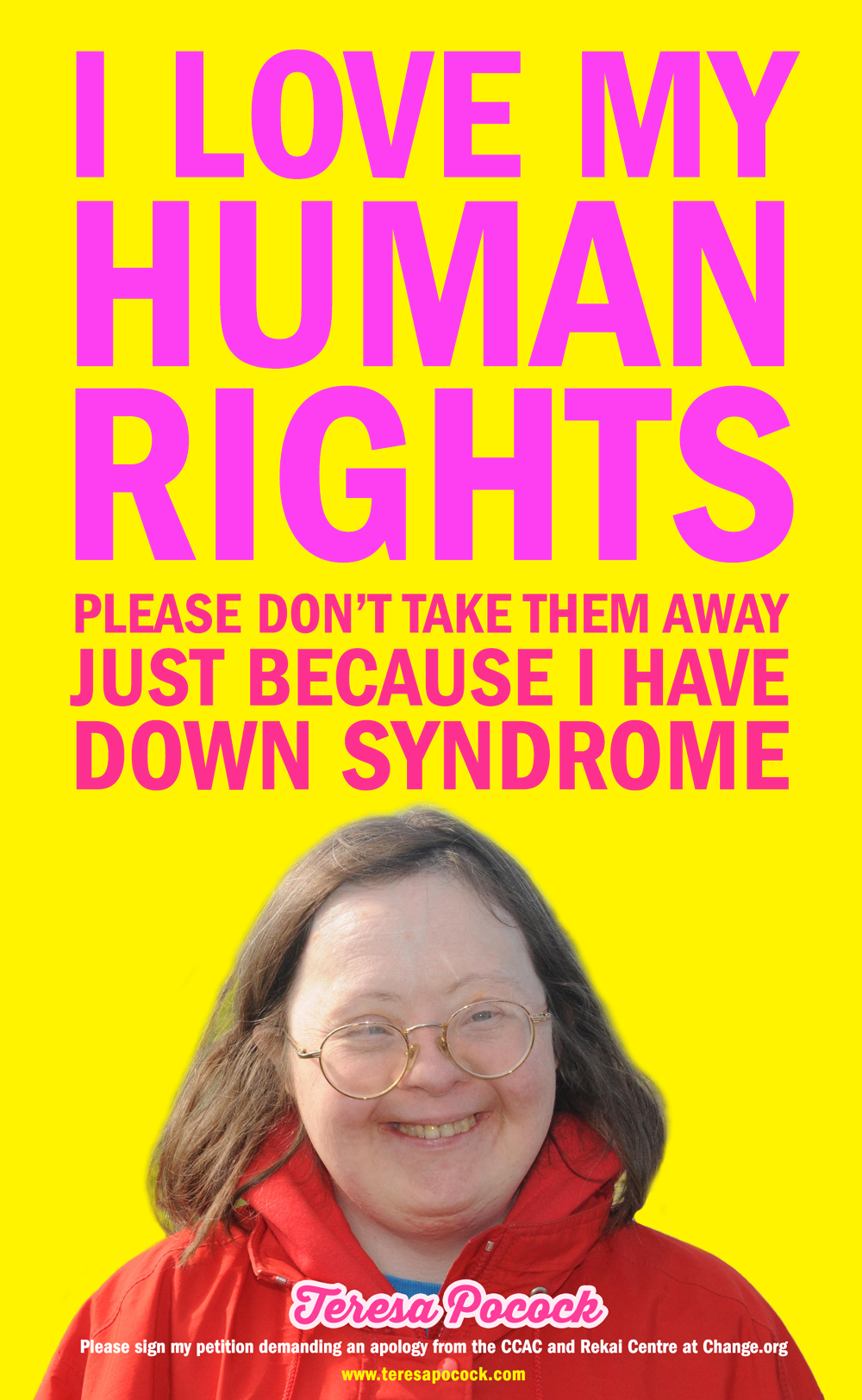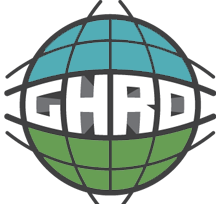Down Syndrome
Down Syndrome is a genetic disorder caused by the presence of an extra chromosome. This leads to growth delays and some intellectual disability. Down Syndrome can occur in any parent and is not caused by anything that the parents have or do not have although the probability of a child being born with the disorder increases the older the parents are. However, studies have shown that education and proper care can help people with Down Syndrome and many live into their fifties and sixties. Also the number of adults with Down Syndrome that are in the work force is constantly increasing. The more information becomes readily available and the greater awareness people have of Down Syndrome, the better we can help enrich their lives.
Links to additional relevant NGOs
Lynn, Sandra. “Down Syndrome Awareness Month: Uncovering Pure Joy.” Tweetspeak, www.tweetspeakpoetry.com/2013/10/29/down-syndrome-awareness-month-uncovering-pure-joy/. In looking for personal experiences in the ideals of how people and children with Down Syndrome are treated, I came across a blog. This blog is written by a mother of three young girls who all have DS. In the blog she discusses the conversations she has with other people of society and what she wished she could say. A lady told her, “You are such a good person” when she told her that all three of her daughters were DS. In which she wanted to explain, “What can I tell her about Down syndrome that would make her understand that I am no better than any other woman who has five children at home?” Then when she simply mentioned her three daughters to another stranger who said, “Oh, I’m sorry.” She wanted to say, “How do I explain Down syndrome in a way that lets her know there is nothing to be sorry about?” This is an important aspect to the human rights issue involving the way not only are people who fall into the DS spectrum are treated but how society acts to and around them simply because they have a different label than themselves. In this case we are dealing with children and in my (Cassie Morla) opinion this attitude towards young children happens way too often. It is quite impossible to change the views of the many when we can not change the views of the strangers that make comments that need to be corrected. Change starts with one person. Brentano, Elisabeth, et al. “Photographer Recreates Famous Paintings With Children With Down Syndrome.” The Mighty, Mighty Proud Media, 10 Nov. 2015, themighty.com/2015/11/photographer-recreates-famous-paintings-with-children-with-down-syndrome/ This article is written about a photographer who recreates famous paintings with children models who are Down Syndrome. This is not the first time a photographer or a company has used children with intellectual disabilities but this is my (Cassie Morla) first time seeing someone take it back into a time where people with DS or any disability were treated horrible on a bigger scale. This is important because there is no record (to my knowledge) of anything like this in which an original painting or photography from the past featured a child or an adult that was classified as “different.” A huge aspect of this is mainly because those whom were on the spectrum of any kind were put into mental institutions where they were starved, sleeping on the floors in cramped rooms, as well as just being ignored and or beaten. It is critical that people be aware that the circumstances that they were in weren’t correct as well as that theses people are humans and deserve the right to basic needs in which the past denied them. Myers, Joshua, and Susan Kaphammer. “A Mom, A Son with Down Syndrome — And the Love That Made a ‘Curse’ A Gift.” NPR – StoryCorps, 19 Feb. 2016, www.npr.org/2016/02/19/467219746/a-mom-a-son-with-down-syndrome-and-the-love-that-made-a-curse-a-gift. Listening to podcasts is an easy way to be informed in what is happening in society but this specific one is a insight in the mind of a young man whom is Down Syndrome. The podcast is simply 3 minutes and one second and in this short time he talks about how life was getting so hard but no one ever know. He later said he considers who he is a gift but before he would had said being DS was a curse. He tried to commit suicide by standing in the middle of an intersection when a lady pulled over and told him to get in her car and talked him out of it. He does not go into detail of why he made this decision other than his mother saying, “you told me once that it’s just too much but I didn’t know how overwhelmed you were until they called me to told that you had gone and stood out in a busy intersection.” Based on this three minute interview we can not know for certainty what he was overwhelmed about but if it has anything to do with the way society treats and views him it says a lot about where we stand today to make people whom feel different feel the same. Nelson, Jessie, director. I Am Sam. 2001. https://www.youtube.com/watch?v=ir6_2EkhzAc “I am Sam” is a film about a father named Sam Dawson who cares for his 7-year-old daughter Lucy. Sam is mentally challenged and gets his daughter taken away from his home due to the idea that he has the intellectual capacity of a seven-year-old and once his daughter gets older he will no longer be able to take proper care of her. Sam is not classified as “Down Syndrome” in the film but he has a group of friends who are and are also a huge role in helping him fight to get his daughter back, which is an important part. In the film he gets a lawyer to work on his case pro-bono and while having a conversation where she tells him to try harder in fighting for his daughter he tells her you don’t know you don’t know when she asks what he means he says, “Yeah, you don’t know what it is like when you try, and you try, and you try, and try and you don’t ever get there! Because you were born perfect and I was born like this, and you’re perfect!” This line says so much about the situation and what it may be like for people to be told who they are based on what they can and can’t not do simply because the government believes they are incapable of doing so. https://www.youtube.com/watch?v=5M–xOyGUX4 (Just Like You – Down Syndrome) “Just Like you – Down Syndrome” is a 13-minute video about the relationship between three groups of friends where one person has down syndrome and their best friend does not. In this video they talk about everything that makes them who they are, what they can do and that they might need a little more time to do and understand things. This video explains the extra chromosomes that makes Down Syndrome; Down Syndrome. An important part of this video was said by a young adult named, Sam and he said, “It is called Down Syndrome, but I am NOT called Down Syndrome, Down Syndrome is not all that I am.” This quote should not only be taken for people with DS but for everyone that is on the spectrum or simply is labeled by society and therefore taken away basic human rights. Newton, Richard W., et al. Down Syndrome Current Perspectives. Mac Keith Press, 2015. The book describes itself by the following: “Down syndrome remains the most common recognisable form of intellectual disability. The challenge for doctors today is how to capture the rapidly expanding body of scientific knowledge and devise models of care to meet the needs of individuals and their families. Down syndrome; Clinical Perspectives provides doctors and other health professionals with the information they need to address the challenges that can present in the management of syndrome. Chapters written by internationally respected paediatricians with a special interest in Down syndrome, cover Down syndrome comorbidities, such hearing problems, gastrointestinal disorders, congenital heart diseases, as well as the underlying biology and new developments in molecular genetics. Contributions from the UK Down Syndrome Association and Down Syndrome Medical Interest Group define how doctors can work effectively with other professionals to improve health care provisions for this group. Each chapter is illustrated by informative case scenarios and answers to FAQs from parents and carers.” Bentley, Lisa, et al. Supporting Children with Down’s Syndrome. Routledge, 2016.
The book describes itself as: “This practical resource contains a wealth of valuable advice and tried-and-tested strategies for supporting children and young people with Down Syndrome. Fully updated with the 2014 SEND Code of Practice, this text describes the different types of difficulties experienced by pupils with Down Syndrome and helps practitioners to understand their diverse needs. The wide-ranging chapters explore a variety of topics, including: defining the profile of a pupil with Down’s Syndrome; guidelines for working with pupils; addressing behaviour issues; the use of ICT; home/school liason; assessment. It provides guidance and practical strategies for SENCOs, teachers and other professionals and parents, helping them to feel more confident, and be more effective in supporting learners in a variety of settings. It also provides materials for in-house training sessions, and features useful checklists, templates and photocopiable resources.” https://www.facebook.com/DownsSyndromeAssociation/ (Facebook for the Downs Syndrome Association, a non-profit. They consider themselves , “We are often the first point of contact for many new parents of a baby with Down’s syndrome looking for information and advice, and remain a valued source of support to families as their child grows and develops.”) http://www.ndss.org/Advocacy/Congressional-Task-Force-on-Down-Syndrome/ (Congressional Task Force on Down Syndrome) NDSS which stands for National Down Syndrome Society is a place where you can find resources and help with anything pertaining to Down Syndrome. An interesting article on this website gave an insight in what is happening on a higher level with awareness and resolving the rights denied of people of this community. An overview of the Congressional Task Force on Down Syndrome states, “which is an expansion of the Congressional Down Syndrome Caucus originally formed in 2008, is made up of US Representatives and US Senators. NDSS works with the Task Force to educate Members of Congress and their staff about Down syndrome, and to promote legislative activities and public policies that would enhance the quality of life for those with Down syndrome.” Moving things up higher in government is a strong way to make a difference. This webpage also gives every name of those whom are members and contact information for those members of Congress who want to take apart in this movement. “Down Syndrome Human and Civil Rights Timeline.” Global Down Syndrome Foundation, 20 Mar. 2015, www.globaldownsyndrome.org/about-down-syndrome/history-of-down-syndrome/down-syndrome-human-and-civil-rights-timeline/. “Down Syndrome.” Wikipedia, Wikimedia Foundation, 9 Sept. 2017, en.wikipedia.org/wiki/Down_syndrome.
Testimonials
Myers, Joshua, and Susan Kaphammer. “A Mom, A Son with Down Syndrome — And the Love That Made a ‘Curse’ A Gift.” NPR – StoryCorps, 19 Feb. 2016, www.npr.org/2016/02/19/467219746/a-mom-a-son-with-down-syndrome-and-the-love-that-made-a-curse-a-gift. Lynn, Sandra. “Down Syndrome Awareness Month: Uncovering Pure Joy.” Tweetspeak, www.tweetspeakpoetry.com/2013/10/29/down-syndrome-awareness-month-uncovering-pure-joy/. Reardon, Marguerite. “‘I Didn’t Know I Would Be Able to Love Her the Way I Do.’” CBS News, CBS Interactive, 20 Mar. 2015, www.cbsnews.com/news/down-syndrome-mothers-story/.







